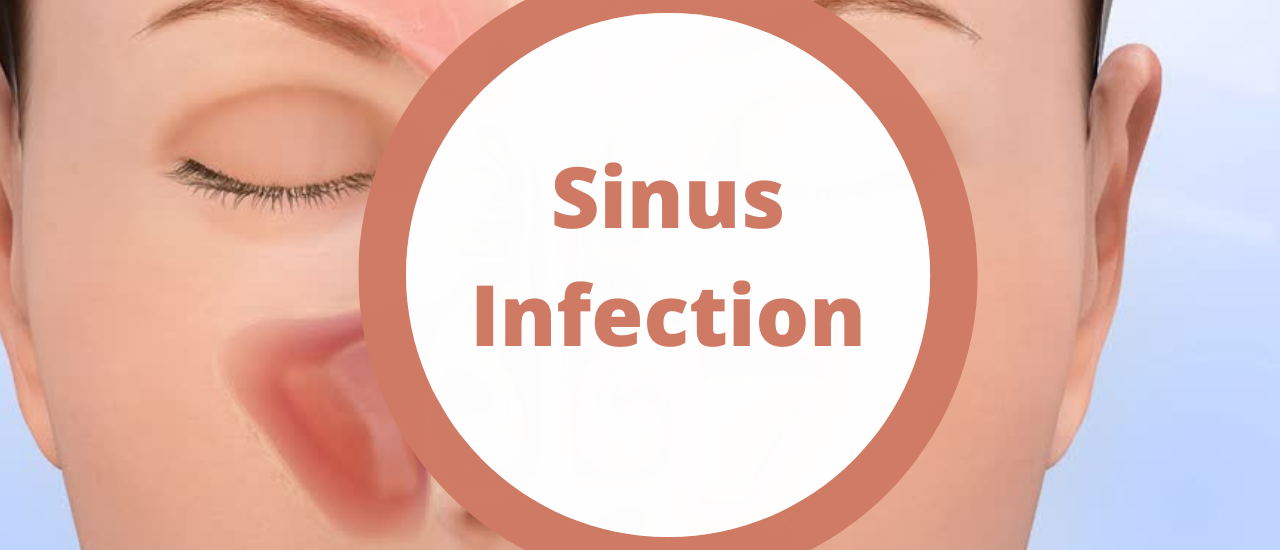


The tissue lining the sinuses can become inflamed or swollen, which is known as sinusitis. Sinuses are hollow areas in the bones of your forehead, cheekbones, and area between your eyes. They produce mucus, which maintains the moisture level inside your nose. They may become clogged and overflow with fluid due to sinuses. Colds or allergies are the usual culprits. The obstruction could lead to an infection. A sinus infection is frequently misdiagnosed as a nasty cold. Numerous symptoms, such as a headache or facial pain, a runny nose, and nasal congestion, are the same. The symptoms of a sinus infection, as opposed to a cold, may be brought on by bacterial infections. A thin mucus is produced by the sinuses and is expelled through the nasal passages.
A virus, bacteria, or fungus that inflames and obstructs the sinuses can result in sinusitis. Episodes of chronic (long-lasting) or seasonal rhinitis can be significantly influenced by allergies. In an effort to wash out the offending inhaled particles that cause allergies, nasal and sinus passageways swell, congest, and become irritated. Seasonal allergies include pollen. Year-round symptoms can be brought on by moulds, dust mites, and pet dander. Several particular causes include:
These symptoms either persist for at least 10 days without getting better or get worse within 10 days of appearing to get better in cases of acute bacterial sinus infections. The signs of sinusitis can resemble cold symptoms. The following are the key indicators of viral sinusitis:
The most typical symptom of sinusitis is facial pain. Above, below, and behind your nose, you have a variety of distinct sinuses. When you have a sinus infection, it can pain in any of these air-filled chambers. Your sinuses may pain and feel somewhat pressured due to swelling and inflammation. This is due to inflammation’s potential to change mucus’ normal flow from the nose to the back of the throat.
When you have a sinus infection, nasal discharge, which can be murky, green, or yellow, may require frequent blowing of the nose. Your diseased sinuses are the source of this discharge, which enters your nasal passages. Additionally, the drainage may skip your nose and go straight down your throat. A tickling, an itch, or even a sore throat could be present.
It can irritate you when sinus drainage runs down the back of your throat, especially if it happens frequently. This might cause a cough that is persistent and bothersome, which may be worse while you are lying down to sleep or right after you get out of bed in the morning. It may also be difficult to fall asleep. The frequency and severity of your coughing can be decreased by sleeping on your side or with your head up.
Fever is a common side effect of many illnesses, including sinusitis, but it is not always present. A fever brought on by this kind of sickness normally ranges from 100.4 to 103°F (38 to 39.4°C), which is known as a low grade fever. Fever is a symptom that the body is battling a virus, bacterial illness, or fungal infection.
Your infected sinuses can create mucus, and that mucus can leak down your neck and into your mouth. A lot of water consumption, frequent mouthwashing, sinus rinses, or tongue brushing may all assist to lessen this feeling.
Although respiratory illnesses are the common cause of sinus infections, other conditions that cause sinus inflammation (sinusitis) can raise your chance of developing a sinus infection or making an existing infection worse.
These risk elements consist of:
Because viruses frequently cause sinus infections, Melinda said that they can spread like other infections like colds. “It’s crucial to practice excellent hygiene practices if you have a sinus infection.
Sinus infections develop when fluid accumulates in the air-filled facial pockets (sinuses). Germs might flourish due to the fluid buildup. Most sinus infections are caused by viruses, but certain sinus infections can also be caused by bacteria.
Untreated sinus infections can become life-threatening by leading to meningitis, invading the brain, eyes, or surrounding bone, however this does not happen very frequently. An infection of the meninges the membranes that surround the brain and spinal cord causes sinusitis.
Serious complications from acute sinusitis are infrequent, as are acute sinusitis complications. If they do, difficulties could consist of:
Children frequently experience allergies and are susceptible to ear and nose infections. If your child exhibits any of the following signs, they may have a sinus infection:
Inflammation Of Ear And Reasons That Builds Up Ear Infection
Eating Addiction Disorder, Its Effects And How To Overcome It
Chicken Pox Blisters: Major Signs, Causes & Risk Elements